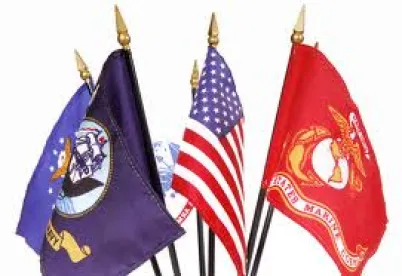There are big changes happening in military healthcare procurement. Some are unsurprising given the October 1, 2019 deadline for the reorganization of all military hospitals and clinics under the management of the Department of Defense (DOD), Defense Health Agency (DHA). But some may be unexpected, reaching all the way to Department of Veterans Affairs (VA) procurement, though the extent to which the VA will ultimately be affected is unclear. In the past few weeks, at least three major announcements were made regarding military healthcare: (1) DHA and the Defense Logistics Agency (DLA) signed a memorandum of agreement (MOA) regarding their respective rolls in DOD healthcare, (2) DLA gave the VA access to its medical/surgical prime vendor formulary indefinitely, and (3) the VA cancelled its long-anticipated prime vendor solicitation under the Medical/Surgical Prime Vendor (MSPV) 2.0 program. Is this all a coincidence? Probably not.
On August 15, 2019, the DLA and DHA announced an MOA[1] establishing a new cooperative approach to medical logistical support to the military healthcare community. DLA currently provides combat logistics support to the military, the U.S. Coast Guard, select federal agencies, and certain allied nations, among others. The MOA covers all aspects of the medical logistics support DLA provides to DHA, including pharmaceuticals, medical/surgical supplies, and healthcare technology equipment. The MOA assigns the DLA and DHA their own roles and responsibilities relating to medical acquisitions, and makes DLA “the acquisition enabler of choice for medical materiel,” according to the DLA press release. Where DLA already has extensive experience in awarding and administering contracts, this seems to be the governmental equivalent of assigning the experts to perform their expertise. Thus under the MOA, DLA will take the lead in procuring medical materiel, and DHA will oversee the acquisition of medical services.
Just three days earlier, on August 12, 2019, the VA and DLA announced a “strategic partnership” by which the VA will have access to DLA’s supply ordering system. This ordering system essentially is a catalog for medical and other supplies (including cleaning supplies and equipment, construction materials and equipment, and notably, medical and surgical supplies and equipment). The VA’s press release suggests this new arrangement will be permanent, touting the modernization and efficiency this collaboration will bring by creating “a centralized ordering system for VA.”
The VA/DLA “strategic partnership” is significant because, until its cancellation the afternoon of August 15, 2019, there was an active Request for Proposals (RFP) for prime vendors under the VA’s much-anticipated MSPV 2.0 program, in addition to various active supplier Requests for Quotations (RFQ) in multiple U.S. regions. The VA cancelled the prime vendor RFP, which had been open since June 3, 2019, providing only that another solicitation would issue in 6-8 weeks. But will it? With the VA’s new access to the DLA supply chain, it is unclear what the VA has to gain by moving forward with its own separate catalog. Assuming that the DLA catalog includes all critical supplies, it would seem duplicative for VA to reinvent the wheel next door with MSPV 2.0. Still, the VA has unique buying restrictions not applicable to DOD, such as the Veterans First contracting program requiring procurement priority for veteran-owned small businesses where two or more are able to submit offers for a VA contract. The VA undoubtedly will run into trouble if it does not take these requirements into account when purchasing through DOD.
Regardless of what the VA plans to do, one would hope the agency communicates the plan to vendors, who have been preparing for MSPV 2.0 since it was previewed in 2018. The military healthcare procurement system as a whole seems to be on the cusp of becoming significantly more integrated and efficient, with DLA taking the lead on medical supply procurement systems for DOD and possibly the VA. However, this could mean MSPV 2.0 is left to dry up on the vine, resulting in fewer contracting opportunities at the VA for medical prime and supply vendors going forward, and other impacts yet to be seen. For now, we await the VA’s next move.
[1] We have yet to see the MOA itself but will update this blog with a copy when it becomes available.




 />i
/>i

